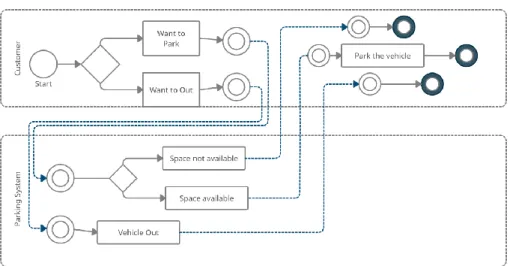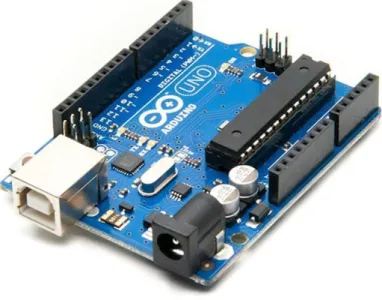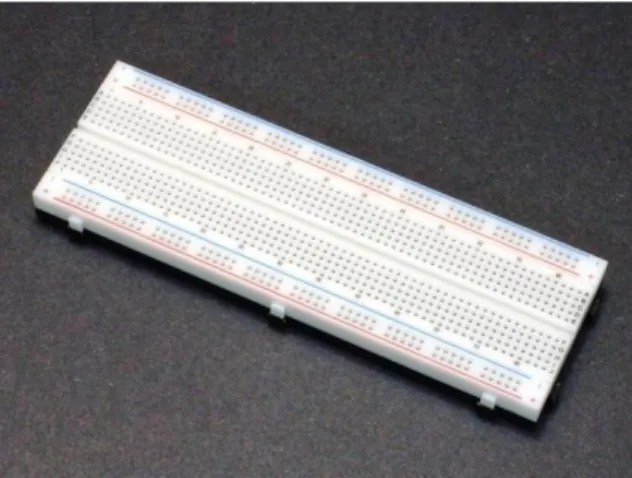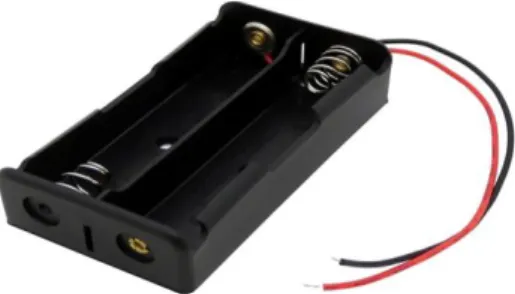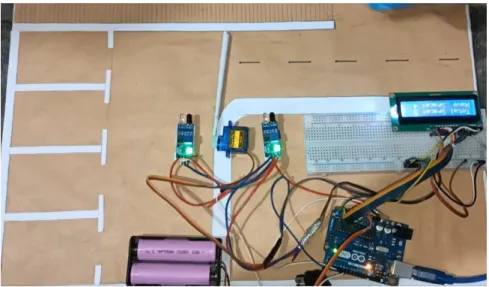CAR PARKING MANAGEMENT SYSTEM BY
Sourav Chandra Roy ID:183-15-11824
Dip Adhikary ID:183-15-12047
This Report Presented in Partial Fulfillment of the Requirements for the Degree of Bachelor of Science in Computer Science and
Engineering
Dr. Sheak Rashed Haider Noori Associate Professor and Associate Head
Department of CSE
Daffodil International University
DAFFODIL INTERNATIONAL UNIVERSITY DHAKA, BANGLADESH
SEPTEMBER 2021
©Daffodil International University i
APPROVAL
This Project titled “CAR PARKING MANAGEMENT SYSTEM”, submitted by Sourav Chandra Roy, ID: 183-15-11824, Dip Adhikar, ID: 183-15-12047 to the Department of CSE, Daffodil International University has been accepted as satisfactory for the partial fulfillment of the requirements for the degree of B.Sc. in CSE and affirmed concerning its style and substance. The presentation has been held on.
BOARD OF EXAMINERS
Chairman Dr. Touhid Bhuiyan
Professor and Head
Department of Computer Science and Engineering Faculty of Science & Information Technology Daffodil International University
Internal Examiner Abdus Sattar
Assistant Professor
Department of Computer Science and Engineering Faculty of Science & Information Technology Daffodil International University
Internal Examiner Mr. Riazur Rahman
Sr. Lecturer
Department of Computer Science and Engineering Faculty of Science & Information Technology Daffodil International University
External Examiner Dr. Dewan Md. Farid
Associate Professor
Department of Computer Science and Engineering United International University
©Daffodil International University ii
DECLARATION
We hereby declare that, this project has been done by us under the supervision of Dr.
Sheak Rashed Haider Noori, Associate Professor and Associate Head, Department of CSE Daffodil International University. We also declare that neither this project nor any part of this project has been submitted elsewhere for award of any degree or diploma.
Supervised by:
Dr. Sheak Rashed Haider Noori
Associate Professor and Associate Head Assistant Professor
Department of CSE
Daffodil International University
Submitted by:
Sourav Chandra Roy ID:183-15-11824 Department of CSE
Daffodil International University
Dip Adhikary ID:183-15-12047 Department of CSE
Daffodil International University
©Daffodil International University iii
ACKNOWLEDGEMENT
First, we express my heartiest thanks and gratefulness to Almighty God for his divine blessing that makes us possible to complete the final year project successfully.
We are truly thankful and wish my significant and obligation to Dr. Sheak Rashed Haider Noori , Associate Professor and Associate Head , Department of Computer Science and Engineering at Daffodil International University, Dhaka. Her interminable persistence, academic direction, consistent support, steady and vivacious management, useful analysis, important guidance, perusing
Finally, we must acknowledge with due respect the continuous support and patients of our parents.
©Daffodil International University iv
ABSTRACT
This project titled “CAR PARKING MANAGEMENT SYSTEM” which is built for the solution of the problems these happened for vehicle parking at our country. This project is mainly focused to these parking spaces which are not use for park because of maintain problems or the vehicle owners do not have information of them. Also, this system can ensure the safety of the vehicles. This project aims at achieving the clear parking solution, no rent problems between the vehicle owners and the parking lot owners, traffic problems these are happened for wrong parking and the problem these happened for parking the vehicles at no parking areas. This system is more useful in our country at the shopping mall areas, cinema hall areas, auditorium areas etc. People can make themselves a parking system like these for their home very easily.
©Daffodil International University v
TABLE OF CONTENTS
CONTENTS
PAGEApproval i
Declaration ii
Acknowledgement iii
Abstract iv
CHAPTER 1: INTRODUCTION
1-21.1 Introduction 1
1.2 Motivation 1
1.3 Objectives 2
1.4 Expected Outcome 2
1.5 Report Layout 2
CHAPTER 2: BACKGROUND
3-52.1 Introduction 3
2.2 Related Works 3-5
2.3 Comparative Studies 4
2.4 Scope of the problem 4
2.4 Challenges 5
CHAPTER 3: REQUIREMENT SPECIFICATION
6-93.1 Business Process Modeling 6
3.2 Requirement Collection and Analysis 6-7
©Daffodil International University vi
3.3 Use Case Modeling and Description 7
3.4 Logical Data Model 7-8
3.5 Design Requirements 8-9
CHAPTER 4: DESIGN SPECIFICATION
10-184.1 Front-End Design 10
4.1.1 Hardware Component 10-14
4.2 Back-End Design 15
4.2.1 Block Diagram & Working Procedure of the System 15-16
4.2.2 Back-End Works 16-17
4.3 Interaction Design and UX 18
4.4 Implementation Requirements 18
CHAPTER 5: TESTING AND RESULT DISCUSSION
19-205.1 Connection Test 19
5.2 Vehicle Entry Test 19-20
5.3 Vehicle Exit Test 20-21
5.4 No Space Available Test 21
5.5 Final System Analysis and Result 21
CHAPTER 6: CONCLUSIOO AND FUTURE SCOPE
226.1 Conclusion 22
6.2 Future Scope 22
REFERENCES
23APPENDIX
24-25©Daffodil International University vii
LIST OF FIGURES
NO FIGURE NAME PAGE
Figure 3.1 Figure 3.3 Figure 3.4 Figure 4.1 Figure 4.2 Figure 4.3 Figure 4.4 Figure 4.5 Figure 4.6 Figure 4.7 Figure 4.8 Figure 4.9 Figure 4.10 Figure 4.11 Figure 4.12 Figure 4.13 Figure 4.14 Figure 4.15
Business process model of Our System Use Case Diagram of Our System Logical data model of Our System Arduino Uno R3
Breadboard Resistor 1k Resistor 4.7k Resistor 100R LCD Display 16X2 Servo Motor SG-90 IR Obstacle Sensor
18650 Battery Holder–2 Cell 18650 battery cell 3.7v Male 2 Male Jumper Wire Simple Front-End Design Test Block Diagram of Our System Arduino 1.8.13 Application Interface
ISIS 7 Professional Application Interface of Proteus 7 Professional
6 7 8 10 11 11 11 12 12 13 13 14 14 14 15 16 17 17
Appendix: Project Arduino 1.8.13 Code Documentation Reflection 24
©Daffodil International University viii
LIST OF TABLES
NO TABLE NAME PAGE
Table 5.1 Vehicle Entry Test 19-20
Table 5.2 Vehicle Exit Test 20-21
Table 5.3 No Space Available Test 21
©Daffodil International University 1
CHAPTER 1 INTRODUCTION 1.1 Introduction
According to the Bangladesh Road Transport Authority (BRTA), the number of registered cars in Dhaka up to May 2013 was 185,619 (BRTA, 2013). These cars had been use only for private purpose and constituted almost 25% of all motorized vehicles registered within Dhaka city. Among all other vehicles, private cars create nuisance in various aspects. It has been found that for 95% of their time on road, cars remain stationary – which means that most of the time they are parked which consumes large amount of road space (Bari & Efroymson, 2006) [1]. This was the equation in 2013, but by 2021, the problem has grown significantly. Many parking lots are now available; however, most individuals are unable to locate them or are unsure of the availability of slots. As a result, we built our system with a display that provides customers with parking information via a display. We can use these people's parking lots if they have multiple parking spaces at their residence but don't use them.
The major goal of this project is for us to work toward reducing traffic difficulties in our country, such as unplanned or unlawful vehicle parking, reducing people's anxiety about vehicle parking, and reducing traffic in commercial areas, shopping mall areas, theater regions, and so on.
1.2 Motivation
The industries inspire us to work on our idea. All of them are discussed further down:
i)
Automatic Door Open System: We may observe automatic doors in many shopping malls, hospitals, and supper stores. These doors open automatically as people approach them for entry or exit.ii)
Automatic Garage in Video Games: As we play open world games like GTA (Grand Theft Auto), the garage doors open automatically when we approach them. This is the one major element that has sparked so much interest in us.©Daffodil International University 2
1.3 Objectives
To make a parking management system available to everyone. To alleviate traffic congestion. To make our country’s road environment as clean as possible. To make the parking system more user-friendly. To create an inexpensive automatic parking system for a home or company. To provide the ability for anyone to design and use this system.
1.4 Expected Output
To create a vehicle parking system that is more efficient. To provide a responsive vehicle parking system that ensures people's vehicles are secure. To prioritize the security of a parked car. To create a cost-effective and useable system. To reduce the amount of unlawful and incorrect parking. To make it easier for people to park their cars. To keep traffic flowing smoothly and free of parking issues.
1.5 Report Layout
Chapter 1: The primary introduction, original motivation, intended objectives, and expected output of the project were all described in this chapter.
Chapter 2: The background introduction, comparative studies, linked work, scopes of the difficulties, challenges we faced, and challenges that will be faced when the system is upgraded are all detailed in this chapter.
Chapter 3: We covered Business Process Modeling (VPM), Use Case Diagram, Logical Data Model, and Design Requirements in this chapter.
Chapter 4: This chapter covers the utility's design, background design, system interface, and the requirements that will be required in the future.
Chapter 5: This chapter covers the testing process and the interpretation of the results.
Chapter 6: Contains a summary of the final outcome or the conclusion of our system, as well as the system's future development potential.
©Daffodil International University 3
CHAPTER 2 BACKGROUND 2.1 Introduction
This section displays the foundation of the Parking Management System and also discusses a few related works. The venture's ideal outcome has been successfully discussed here. Innovation in the new world is becoming far more bright than it was earlier. People organizations are completing a tremendous deal of unintelligible work, contrary to what they believed in the past. They're looking for innovative ways to make items that have a higher yield. So, which country is most interested in a venture that provides a higher yield. Because an authority invests resources in a project, the result should be significantly more intelligent, given that they contribute a significant sum for the most recent hardware. Along these lines, they will be able to obtain the most advanced systems, which will simplify their work. As a result, Parking Management System is a high-level innovation that can be used to carry out such advances. As a result, there are a number of things that have been well-imagined by a number of analysts and engineers in the past. We need to know a component of these works because we are working with some sort of task. By which we can consider our work as a requirement that it truly meets our aims, as well as the extent to which our work standard differs from that of other jobs. As a result, people can easily park their vehicles.
2.2 Related works
This section looked at some similar connected efforts to this project:
i) Most doors are controlled by persons with the use of keys, security cards, password or pattern to open the door. The aim of this paper is to help users for improvement of the door security of sensitive locations by using face detection and recognition [2].
ii) Aiming at enhancing the reliability of the automatic door operation, S7- 200 programmable logic controller (PLC) was used as the core of the automatic door system. The principle of control system was analyzed with description of the control system hardware [3].
©Daffodil International University 4 iii) Dams are commonly built with a drain or similar system to control water
levels in an impoundment for routine maintenance or emergencies. A disaster is defined as any incident that produces significant injury or damage, as well as catastrophic or unexpected tragedy. Dam failures certainly fall within this category. In this work, we employ the AT89s8253 microprocessor, which is a standard 8-bit Atmel microcontroller. It's an 8- bit CMOS microcontroller with 12K bytes of In-System Programmable (ISP) Flash program memory and 2K bytes of EEPROM data memory that's low on power and high on performance. It features 32 input/output lines that can be programmed [4]
2.3 Comparative Studies:
We learned from our previous talk that all of the research and project work has been completed in a variety of areas. In any case, their most active area is to use their project to screen the complete framework. On the principal center point, they have a few obstructions. The state of the project is see alternate for the most part. They merely want to check out their working surroundings or work on the spot.
Alternatively, they might simply turn the light on and off. We tried to cover all of the areas in our project so that it could be used to its full potential. We have two IR Obstacle Sensor modules in our project. When someone approaches to park a vehicle, the first sensor detects the vehicle and opens the door, which we did with an SG90 9G Servo Motor. The second sensor will detect the car after crossing the door, and the door will automatically close. As a result, we have an excellent component in our project. As a result of these features, our project differs from the others.
2.4 Scope of the Problem
After all, we do our best for this project, but we cannot guarantee that it is bug-free.
Perhaps an expert can inform us of our system's flaws. And, in our opinion, the breadth of the concern is that evil people (such as thieves or others) may try to disrupt our system and injure our components and sensors. So, if we ever get the chance to work on this project again, we'll pay extra attention to these areas.
©Daffodil International University 5
2.5 Challenges
We had to learn about hardware headers in programming language to overcome the obstacles we had while building. These headers include a built-in library for working with components such as LCD displays, Servo Motors, and Sensors. People in our country do not want to adopt digital stuff, which will be one of our future issues. They are actually apprehensive about utilizing new technology. Illegal parking is a lucrative industry for dishonest people anywhere in our country, and it will be a major issue for us.
©Daffodil International University 6
CHAPTER 3
REQUIREMENT SPECIFITACTION
3.1 Business Process Modeling:
The business process model is a method of illustrating the work process of a framework. The information stream of this architecture can be shown using a business process model. A user who wishes to park their automobile in our system must first visit our garage. The first sensor identifies the car when he or she approaches the garage door, and the door opens. If the garage is full, the second sensor confirms the vehicle's entry and closes the door. If the garage is vacant, the first sensor will identify the vehicle and the door will not open; he can display the message "Sorry, no space available" on the display if the garage is not empty. When a user wishes to exit his or her car, the second sensor detects the vehicle first, and the door is opened; once the vehicle has passed through the door, the first sensor detects the vehicle, and the door is closed. As a result, the entire engagement will come to a stop, as seen in Figure 3.1
Figure 3.1: Business Process Modeling
3.2 Requirement Collection and Analysis:
The primary discussion about requirement components and their functions will be requirement collecting and analysis. As a result, we use two IR Obstacle Sensor modules as a door open and close switch. For functional work, an Arduino Uno R3 is
©Daffodil International University 7 required. A display that shows the system's output, which provides information for the users. We'll need to find a few decent electronics stores that sell the Arduino Uno R3 and the other components we'll need.
3.3 Use Case Modeling and Description:
So, according to our system's Use Case Diagram, when a customer needs to park his vehicle, he must bring the vehicle to our system and become a member. He is given a parking spot by our management. We also tried to incorporate surveillance or IOT for vehicle monitoring, but our lack of experience in these areas prevented us from doing so.
Figure 3.3: Use Case Modeling and Description
3.4 Logical Data Model:
So, we can see that this Logical Data Model comprises three entities: Customer, Car, and Parking System. Customer has two foreign keys (FK): Car Number and Car Model & Color, as well as a Primary Key (PK) Customer ID. The primary key is the car number, and the foreign keys are the car model and color, as well as the parking
©Daffodil International University 8 slot number. Finally, there is a Primary Key, Parking Slot Number, and two Foreign Keys, Customer ID and Car Number, in the Parking System.
Figure 3.4: Logical Data Model
3.5 Design Requirement:
In this section, we'll go over the framework's plan requirements, which will include both hardware and software requirements. The hardware requirements are the most important part of the first execution of this project in this framework. We designed the entire structure around the hardware. The following is a list of hardware requirements:
Hardware Requirements:
i) Arduino Uno R3 ii) Breadboard iii) Resistor 1k iv) Resistor 4.7k v) Resistor 100 R vi) LCD Display 16x2 vii) Servo Motor SG 90 viii) IR Obstacle Sensor
©Daffodil International University 9 ix) 18650 Battery Holder- 2 Cell
x) 18650 Battery Cell 3.7 volt xi) Male 2 male jumper wire
The software requirements are the most important part of constructing the task in this framework. We planned the framework cycle and how the application and framework will interact using the software. Similarly, the software has planned the implementation of the venture. The following is a list of software requirements:
Software Requirements:
i) Application Interface for Arduino 1.8.13
ii) Proteus 7 Professional's ISIS 7 Professional Application Interface
In this section, we only looked at the hardware and software requirements that are required.
©Daffodil International University 10
CHAPTRE 4
DESIGN SPECIFICATION
4.1 Front in Design:
We discussed the importance of the framework and its outline in a previous conversation. So, in this section, we'll go through all of the qualifications.
4.1.1 Hardware component:
In this discussion, we'll look at the hardware components that will be needed to create the project model.
i) Arduino Uno R3: The Arduino Uno R3 is a microcontroller board based on a removable, dual-inline-package (DIP) ATmega328 AVR microcontroller. It has 20 digital input/output pins (of which 6 can be used as PWM outputs and 6 can be used as analog inputs). Programs can be loaded on to it from the easy-to-use Arduino computer program. The Arduino has an extensive support community, which makes it a very easy way to get started working with embedded electronics. The R3 is the third, and latest, revision of the Arduino Uno [5]. It is shown in Figure 4.1 that our current hardware is heavily reliant on it.
Figure 4.1: Arduino Uno R3
©Daffodil International University 11 ii) Breadboard: A breadboard is a rectangular piece of plastic having a
number of little holes in it. These holes make it simple to prototype (build and test an early version of) electronic circuits with electronic components, such as this one with a battery, switch, resistor, and LED (light-emitting diode). Figure 4.2 depicts a breadboard.
Figure 4.2: Breadboard
iii) 1kResistor: It's simple to calculate using a 100R resistor and a 4.7k resistor, as shown in Figure 4.3.
Figure 4.3: Resistor 1k
iv) 4.7k Resistor: The specification is the same as that of a 100R resistor, and 4.7k denotes 4700 ohm, as shown in Figure 4.4.
Figure4.4: Resistor 4.7k
©Daffodil International University 12 v) 100R Resistor: The R can be used as a decimal point in some cases. So 100R
is equal to 100 Ohms. These 100 ohm resistors work well as pull-ups, pull- downs, and current limiters in breadboards and other prototype applications.
Show in figure 4.5
Figure 4.5: Resistor 100R
vi) LCD Display 16x2: An LCD (Liquid Crystal Display) screen is an electronic display module and has a wide range of applications. A 16x2 LCD display is very basic module and is very commonly used in various devices and circuits. A 16x2 LCD means it can display 16 characters per line and there are 2 such lines [6] .This is depicted in Figure 4.6.
Figure 4.6: LCD Display 16x2
©Daffodil International University 13 vii) Servo Motor SG 90: Servo Motor SG90 is a tiny and lightweight server
motor with high output power. Servo can rotate approximately 180 degrees (90 in each direction), and works just like the standard kinds but smaller. You can use any servo code, hardware or library to control these servos [7]. Figure 4.7 depicts the SG-90 servo motor.
Figure 4.7: Servo Motor SG 90
viii) IR Obstacle Sensor: An infrared (IR) sensor creates and/or detects infrared radiation to sense its surroundings. An infrared sensor used as an obstacle detector works by sending out an infrared signal that bounces off the surface of an object and is received by an infrared receiver. Figure 4.8 depicts the IR sensor.
Figure4.8: IR Obstacle Sensor
viii) 18650 Battery Holder - 2 Cell: This apparatus aids in the storage of our batteries. Graph 4.9.
©Daffodil International University 14
Figure 4.9: 18650 Battery Holder- 2 Cell
ix) 18650 Battery Cell 3.7 volts: The rechargeable power equipment we'll require for our system is represented in Figure 4.10.
Figure 4.10: 18650 Battery Cell 3.7 volt
xi) Male 2 male jumper wire: Male to male jumper wire These are male to male jumper wires that are used to link female header pins on any development board (such as Arduino) to other development boards or breadboards. Figure 4.11 illustrates this.
Figure 4.11: Male 2 male jumper wire
©Daffodil International University 15 As a result, we do not have enough space to complete the Front-End Design, but we will do our best.
Figure 4.12 Simple Front- End Design Evaluation
4.2 Back-End Design:
We'll talk about the project's back-end design in this session. In general, we'll talk about the project's block diagram and back-end operations.
4.2.1 The System's Block Diagram and Operating Procedure:
©Daffodil International University 16 Figure4.2.1: System's Block Diagram and Operating Procedure
Our system's block diagram is shown in Figure 4.13. We attach all of the equipment to the Arduino UNO R3 as shown in the block diagram, and then program the Arduino UNO R3. The infrared sensors act as switches, allowing you to open and close the door. We utilize a Servo motor SG-90 and our system for the dooe, and we can view all of the results of our project on the LCD display.
4.2.2 Back –End Works:
First, we must install our software on the Arduino Uno R3. We’ll need the Arduino 1.8.13 application for this.
©Daffodil International University 17 Figure 4.14 Application Interface for Arduino 1.8.13
First, we must install our software on the Arduino Uno R3. We'll need the Arduino 1.8.13 application for this. And gathering all hardware devices at once is really difficult. Proteus 7 Professional with ISIS 7 Professional is good simulation software that we use to test our system and program.
Figure 4.15: Proteus 7 Professional's ISIS 7 Professional Application Interface
©Daffodil International University 18
4.3 Interaction Design and UX:
Actually, we've talked about our interaction design in the past, but let us explain it again. We have an LCD display for user engagement where they may see the status of the parking place. We have two sensors and a servo motor for the door to open automatically. We show a film to our classmates for UX, or user experience, and they give us a lot of positive feedback.
4.4 Implementation Requirements:
Any parking lot, such as a commercial parking lot or a personal parking lot, can be used to implement the system. As a necessity, all of this hardware must be used, and tasks such as installing the program in an Arduino UNO or any other type of hardware that can take a program, installing the hardware, simulating the software, and so on must be completed.
©Daffodil International University 19
CHAPTER 5
TESTING AND RESULT DISCUSSION 5.1 Connection Test:
After we've installed all of the gear, we turn on the electricity to the system, which turns on all of the lights, and we double-check that everything is working properly.
5.2 Vehicle Entry Test
There are four parking spaces available in our system. The vehicle entry test is shown in Table 5.1.
First Sensor Second Sensor Display Detect the
presence of a vehicle and the presence of an open door.
Detect the presence of a vehicle and close the door.
Detect the presence of a vehicle and the presence of an open door.
Detect the presence of a vehicle and close the door.
Detect the presence of a vehicle and the presence of an open door.
Detect the presence of a vehicle and close the door.
Detect the presence of a vehicle and the presence of an open door.
Detect the presence of a vehicle and close the door.
©Daffodil International University 20 Detect the
presence of a vehicle and the presence of an open door.
Detect the presence of a vehicle and close the door.
Table 5.1: Vehicle Entry Test
5.3 Vehicle Exit Test:
The second sensor will identify the car first upon exiting.
Second Sensor First Sensor Display Detect the
presence of a vehicle and the presence of an open door.
Detect the presence of a vehicle and the presence of an open door.
Detect the presence of a vehicle and the presence of an open door.
Detect the presence of a vehicle and the presence of an open door.
Detect the presence of a vehicle and the presence of an open door.
Detect the presence of a vehicle and the presence of an open door.
Detect the presence of a vehicle and the presence of an open door.
Detect the presence of a vehicle and the presence of an open door.
©Daffodil International University 21 Detect the
presence of a vehicle and the presence of an open door.
Detect the presence of a vehicle and the presence of an open door.
Table 5.2: Vehicle Exit Test
5.4 No Space Available Test
We put the system to the test when there is no parking space available, as indicated in table 5.3.
First Sensor Second Sensor Display When a car is
detected the door is not open.
There’s nothing to do
Table 5.3: No space available test
5.5 Final System Analysis and Result
The final system appears to be in fine shape. The accepted result is shown in Tables 5.1, 5.2, and 5.3.
©Daffodil International University 22
CHAPTER 6
CONCLUSION & FUTURE SCOPE
6.1 Conclusion
We've already talked about the hardware and software. We use Arduino 1.8.13 for the program, which is a C program, and Arduino software contains built-in library files for several types of hardware, which we can use to quickly create the program. And everything we've talked about so far.
6.2 Future Scope
Many things are in the works for the future of our system:
❖ Making an online parking server that runs on the web.
❖ Setting up timeout notification alerts.
❖ Developing a vehicle safety system
❖ The addition of a consumer smart card system.
❖ Develop the system using automobile surveillance or Internet of Things.
❖ Including a method for pre-paying for parking.
©Daffodil International University 23
REFERENCES
[1] Zannat, K. E., Ahmed, T., Mitra, S. K., Rafiq, R., Hasan, M. A., Akhter, K., & Fahad, Z. H.
(2013). “Parking Demand and Supply Analysis of Major Shopping Centers in Dhaka–A Case Study of New Market Shopping Center along Mirpur Road”. Journal of Bangladesh Institute of Planners ISSN, 2075, 9363.
[2] Lwin, Hteik Htar, Aung Soe Khaing, and Hla Myo Tun. "Automatic door access system using face recognition." international Journal of scientific & technology research 4.0 (2015): 294-99.
[3] Sun, Kang-Ling, Zhao-Wei Yang, and Ye Zhang. "Control system design of automatic door based on PLC [J]." Journal of Mechanical & Electrical Engineering 11 (2010).
[4] Bhardwaj, P., Rajawat, Y. S., Rajput, S., Narvariya, S. S., & Narayan, L. (2014). "Automatic Dam Shutter Senses The Water Level and Control The Dam Door Using Servo Motor". In Proceedings of (Vol. 4).
[5] Pololu - Arduino Uno R3, https://www.pololu.com/product/2191, last accessed on 6th August , 2021.
[6] Standard LCD 16x2 Display - Thingbits Electronics, https://www.thingbits.in/products/standard- lcd-16x2-display, last accessed on 6th August, 2021.
[7] Micro Servo Motor SG90, https://www.tertiaryrobotics.com/micro-servo-motor-sg90.html, last accessed on 6th August, 2021.
©Daffodil International University 24
APPENDIX
Appendix: Project Arduino 1.8.13 Reflection
This is a list of Arduino code documentation. For this code region, we need introduce the proper library. The configuration of code must then be followed. We may plan our longing code in Arduino 1.8.13 and upload it to Arduino UNO R3 by following the code design.
Visit the Arduino official website to get the newest Arduino software. Visit the Proteus official website to get the latest version of Proteus 7 Professional with ISIS 7 Professional.
#include <LiquidCrystal.h>
LiquidCrystal lcd(A0, A1, A2, A3, A4, A5);
Servo myservo1;
int ir_s1 = 2;
int ir_s2 = 4;
int Total = 5;
int Space;
int flag1 = 0;
int flag2 = 0;
void setup() {
pinMode(ir_s1, INPUT);
pinMode(ir_s2, INPUT);
myservo1.attach(3);
myservo1.write(100);
lcd.begin(16, 2);
lcd.setCursor (0,0);
lcd.print(" Car Parking ");
lcd.setCursor (0,1);
lcd.print(" System ");
delay (2000);
lcd.clear();
Space = Total;
©Daffodil International University 25 }
void loop(){
if(digitalRead (ir_s1) == LOW && flag1==0){
if(Space>0){flag1=1;
if(flag2==0){myservo1.write(0); Space = Space-1;}
}else{
lcd.setCursor (0,0);
lcd.print(" Sorry no Space ");
lcd.setCursor (0,1);
lcd.print(" Available ");
delay (1000);
lcd.clear();
} }
if(digitalRead (ir_s2) == LOW && flag2==0){flag2=1;
if(flag1==0){myservo1.write(0); Space = Space+1;}
}
if(flag1==1 && flag2==1){
delay (1000);
myservo1.write(100);
flag1=0, flag2=0;
}
lcd.setCursor (0,0);
lcd.print("Total Space: ");
lcd.print(Total);
lcd.setCursor (0,1);
lcd.print("Have Space: ");
lcd.print(Space);
}
©Daffodil International University 26
©Daffodil International University 27
©Daffodil International University 28
